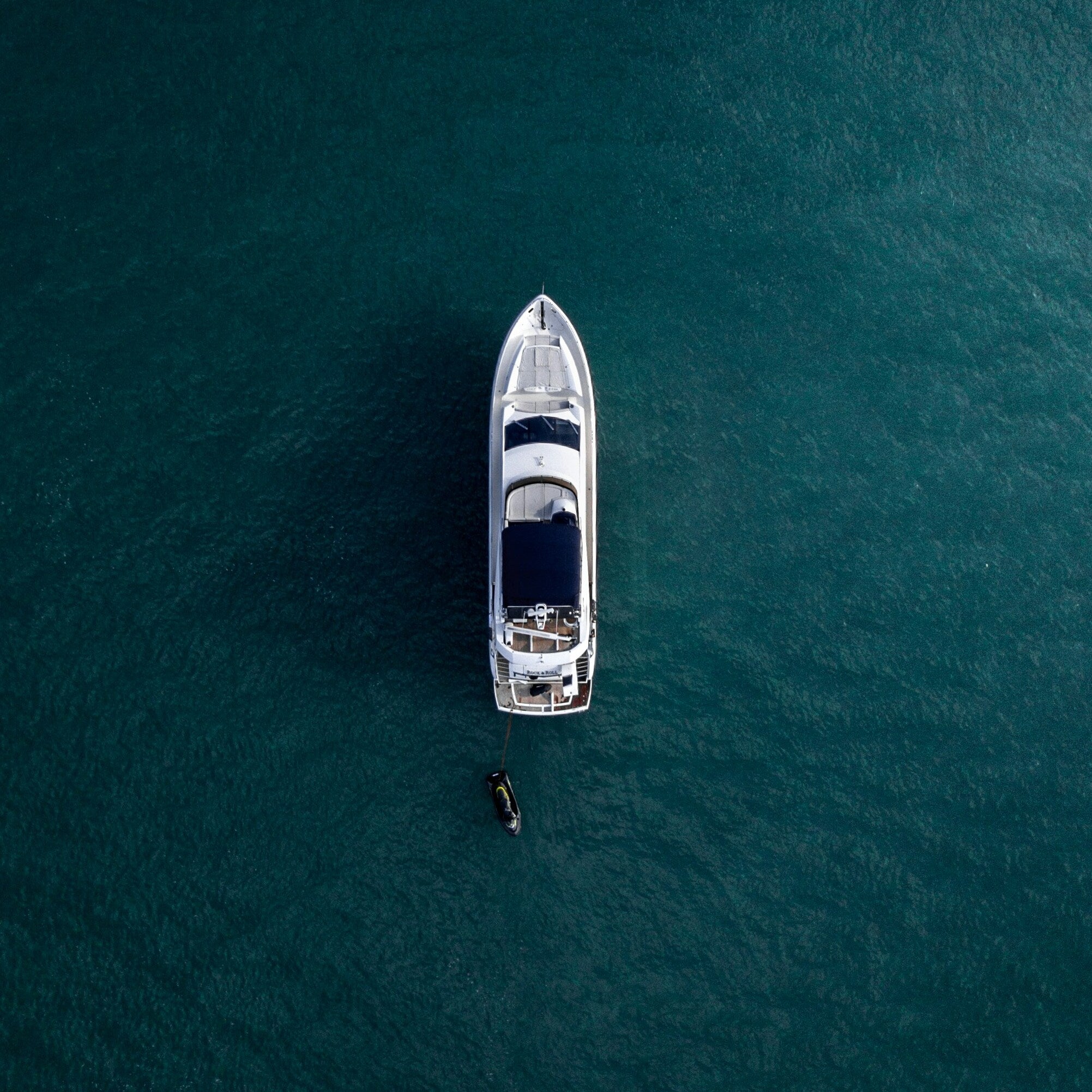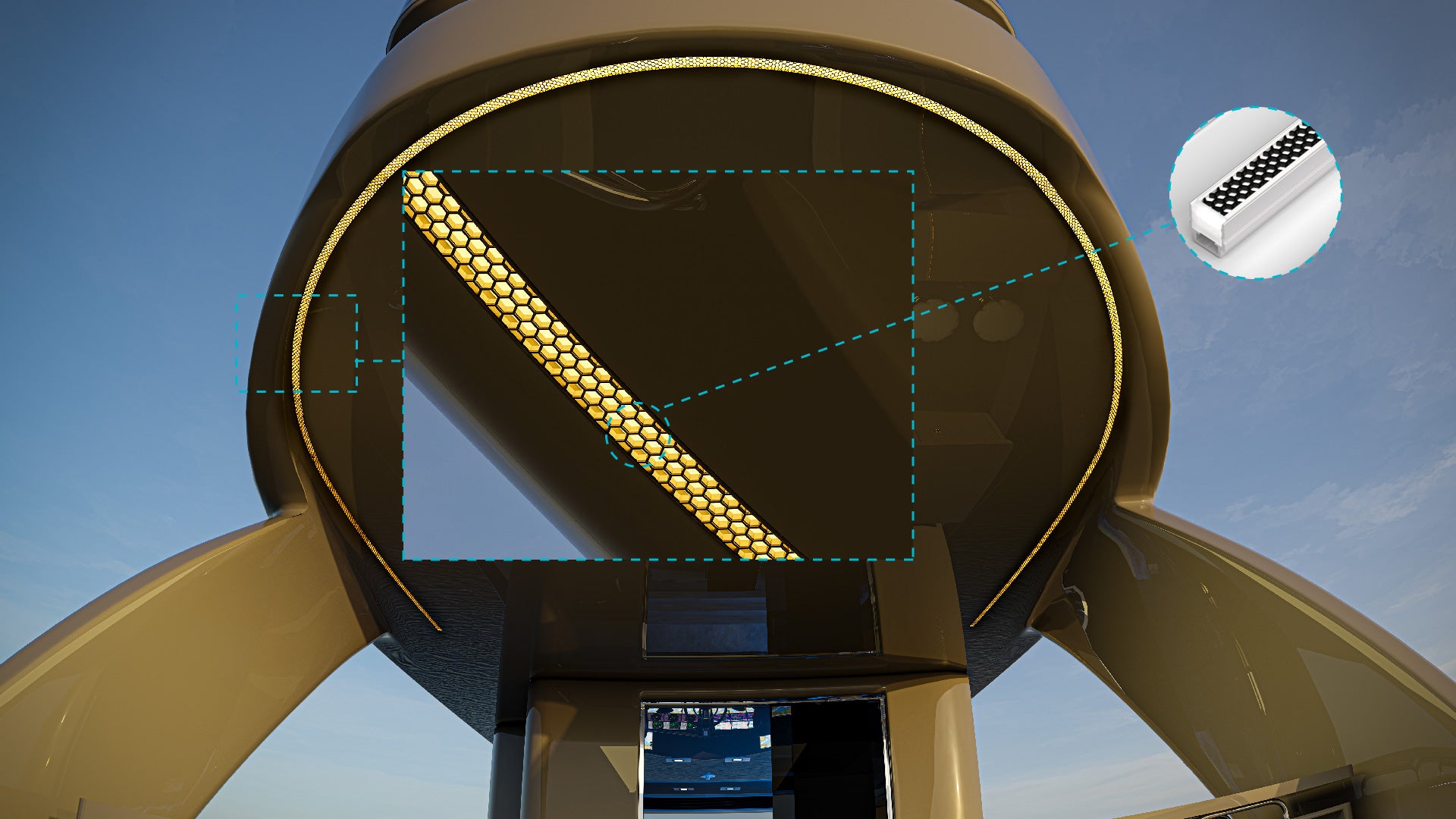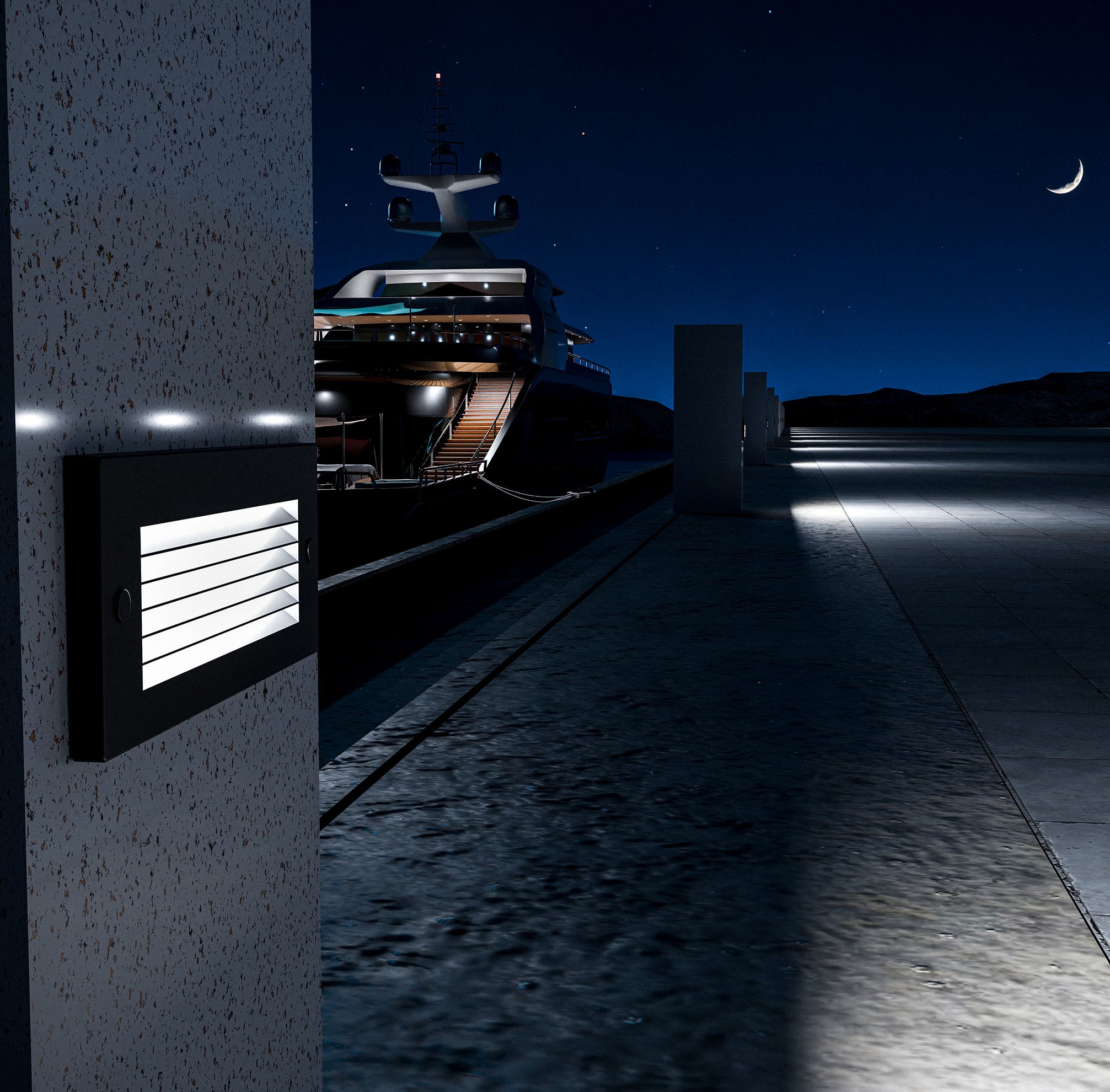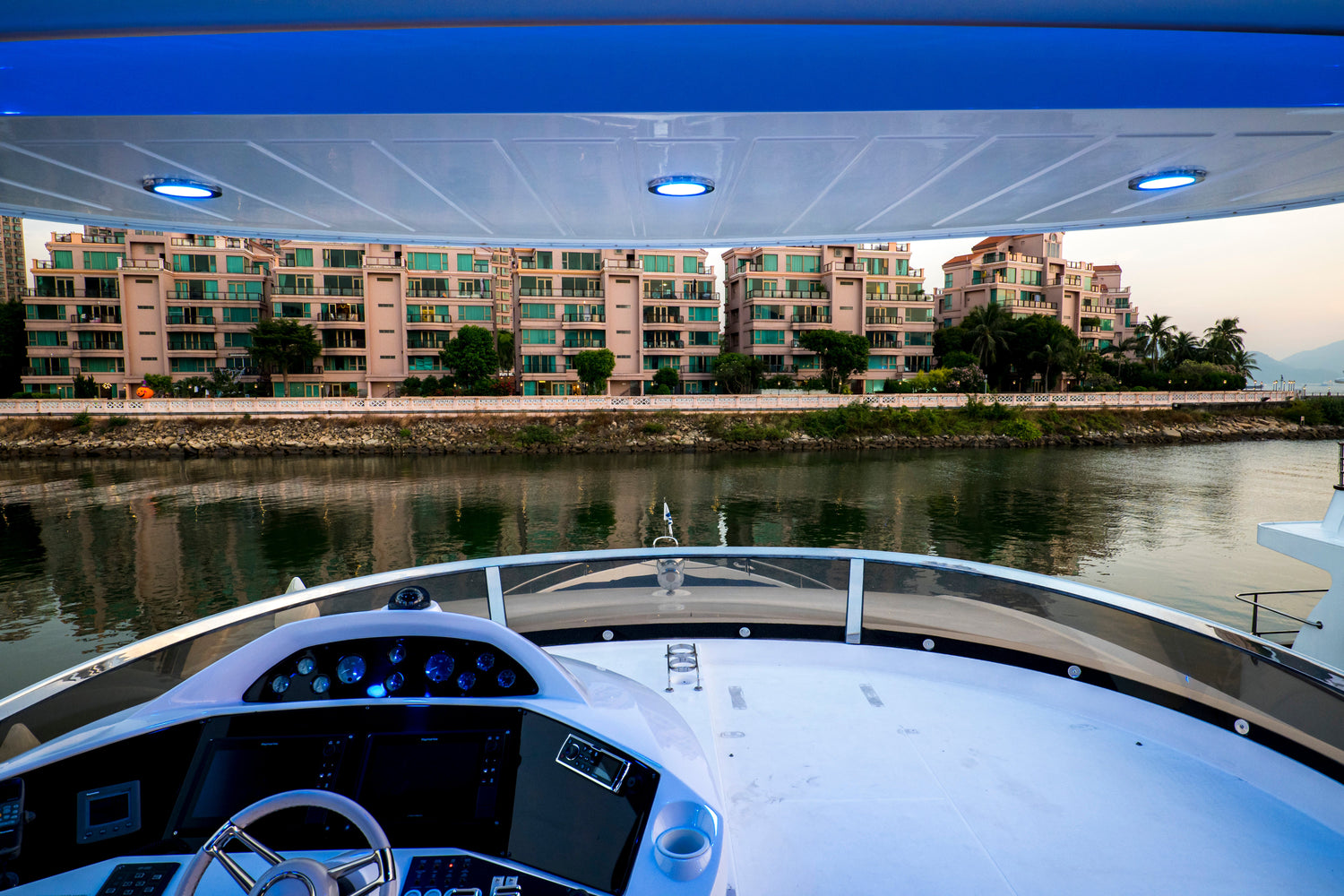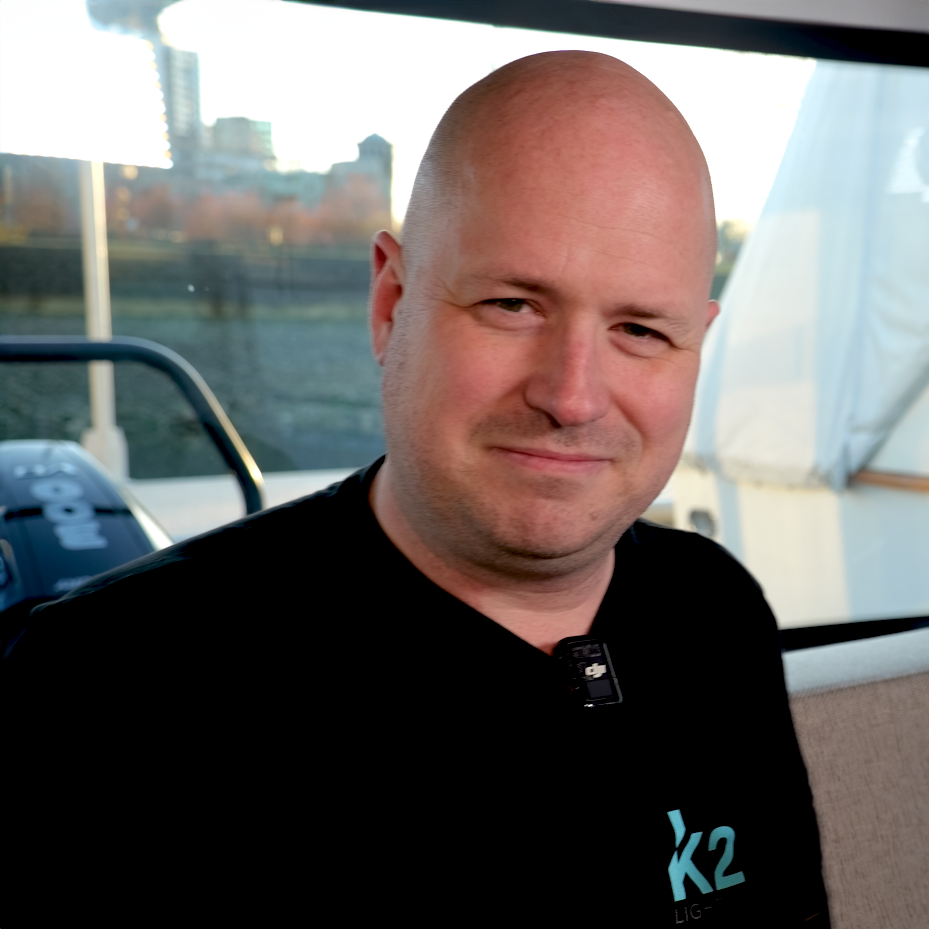Marine LED lighting has rapidly become the preferred choice for boat owners, yacht enthusiasts, and marine professionals worldwide. Known for its energy efficiency, durability, and versatility, LED technology has transformed the way boats are illuminated, both above and below deck. Unlike traditional halogen or incandescent lights, marine-grade LEDs are specifically designed to withstand the challenging conditions of marine environments, including saltwater exposure, humidity, and constant vibrations.
For beginners, navigating the wide variety of marine LED lighting options can feel overwhelming. From choosing the right fixtures for different zones on your boat to understanding installation requirements and maintenance tips, there’s a lot to consider.
This guide will walk you through everything you need to know about marine LED lighting, helping you make informed choices that improve your boat’s safety, functionality, and visual appeal.
What is Marine LED Lighting?
Understanding LED Technology
LED stands for Light-Emitting Diode, a semiconductor device that emits light when an electrical current passes through it. Unlike traditional bulbs, which rely on heating filaments, LEDs generate light through electroluminescence, making them far more energy-efficient and durable. This technology allows LEDs to produce bright, consistent illumination while consuming minimal power and generating very little heat.
Marine LED lighting utilizes this technology in fixtures specifically engineered for the rigors of the marine environment. From navigation lights to underwater fixtures, LEDs have revolutionized the marine lighting industry, offering better performance and reliability across the board.
What Makes Marine LED Lights Different?
Marine LED lights differ from standard LEDs in several key ways. First, they are designed with higher IP (Ingress Protection) ratings, typically IP67 or IP68, ensuring they are fully waterproof and resistant to dust and debris. Second, they are constructed using corrosion-resistant materials like 316 stainless steel and marine-grade aluminum, which protect against rust and saltwater damage. Finally, marine LEDs often include UV-resistant coatings to prevent damage from prolonged exposure to sunlight, making them a long-lasting solution for both exterior and interior applications.
Why Choose Marine LED Lighting Over Traditional Lighting?
Energy Efficiency
One of the most significant advantages of marine LED lighting is its exceptional energy efficiency. LEDs consume up to 80% less power than halogen or incandescent bulbs while providing the same, if not better, brightness levels. For boat owners, this means longer battery life, reduced reliance on onboard generators, and lower fuel consumption. Energy efficiency is especially critical during long voyages or when anchoring in remote locations where power resources are limited.
Durability and Weather Resistance
Marine-grade LEDs are built to endure harsh conditions, including constant exposure to salt spray, humidity, and fluctuating temperatures. The robust construction of these fixtures ensures they can withstand impacts, vibrations, and extended periods of exposure to challenging weather without losing their functionality. Unlike traditional bulbs, which are prone to breaking or failing under such conditions, LEDs are far more resilient and reliable.
Longer Lifespan
The average lifespan of an LED bulb is around 50,000 hours, significantly outlasting halogen or incandescent alternatives. This means fewer replacements, reduced maintenance costs, and less time spent troubleshooting faulty lighting systems. For boat owners, the extended lifespan of LEDs translates to fewer disruptions and more time enjoying the water.
Low Heat Emission
Traditional lighting systems often generate significant heat, posing both a safety risk and potential damage to surrounding materials. LEDs, on the other hand, emit very little heat, even after extended use. This not only reduces fire risks but also keeps enclosed spaces, such as cabins or engine rooms, cooler and more comfortable.
Types of Marine LED Lights and Their Applications
Navigation Lights
Navigation lights are essential for safety and legal compliance while boating at night or in low-visibility conditions. Marine-grade LED navigation lights offer bright, reliable illumination and come in various types, including port lights (red), starboard lights (green), and masthead lights (white). LEDs excel in this role due to their energy efficiency and long lifespan, ensuring visibility without draining onboard power supplies.
Deck and Courtesy Lights
Deck lights and courtesy lights play a dual role in ensuring safety and enhancing aesthetics. These fixtures are typically installed along walkways, stairways, and working areas to improve visibility and reduce trip hazards. Additionally, LED deck lights can be designed with adjustable brightness levels or warm color temperatures, creating a welcoming ambiance for evening gatherings or social events onboard.
Underwater Lights
Underwater LED lights are a popular choice for boat owners looking to enhance the visual appeal of their vessels. Installed below the waterline, these lights illuminate the surrounding water, creating a stunning glow that attracts marine life and adds a luxurious aesthetic. Beyond their aesthetic value, underwater lights also serve practical purposes, such as aiding visibility during nighttime anchoring or hull inspections.
Cabin and Interior Lights
LED cabin lights are ideal for creating a comfortable and functional interior space. With options ranging from overhead panels to flexible reading lamps, LED fixtures offer customizable lighting solutions for sleeping quarters, kitchens, and dining areas. Their low power consumption and minimal heat emission make them perfect for enclosed spaces.
Floodlights and Spotlights
Floodlights and spotlights are essential for outdoor tasks such as docking, fishing, or emergency repairs. LED floodlights deliver wide, bright beams for general illumination, while spotlights offer focused, powerful light for precision tasks. These fixtures often come with adjustable angles, ensuring they can be directed exactly where needed.
Accent Lighting
Accent lighting serves primarily aesthetic purposes, highlighting key features of a boat such as architectural details, storage compartments, or seating areas. RGB LED fixtures offer color-changing capabilities, allowing boat owners to customize lighting schemes for different moods or events.
How to Choose the Right Marine LED Lights
Understand Your Lighting Needs
Every boat has unique lighting requirements based on its size, layout, and primary activities. Assess whether you need lighting for navigation, task-specific work zones, ambiance, or safety measures. Understanding these needs will guide your selection process and help prioritize key areas.
Check IP Ratings for Waterproofing
Marine environments are unforgiving, and waterproofing is non-negotiable. Look for fixtures rated IP67 or higher for deck and cabin lights, and IP68 for underwater fixtures. These ratings ensure protection against water ingress, dust, and environmental exposure.
Material Quality and Corrosion Resistance
Opt for fixtures made from 316 stainless steel or marine-grade aluminum, as these materials offer superior resistance to rust and corrosion. Durable polycarbonate lenses are also ideal for withstanding impacts and environmental wear.
Evaluate Brightness and Beam Angles
Select fixtures with appropriate lumen output to ensure sufficient brightness for their intended purpose. Wider beam angles are ideal for floodlighting large areas, while narrow beams are more suitable for task lighting or spotlights.
Consider Power Source and Energy Consumption
Choose between hardwired, battery-powered, or solar-powered LEDs based on your vessel's energy availability and power management plan. Solar-powered LEDs are especially useful for energy-conscious boat owners or off-grid operations.
Installing Marine LED Lights: A Step-by-Step Guide
Pre-Installation Planning
Before installing marine LED lights, careful planning is essential to ensure optimal functionality and long-term reliability. Start by evaluating the areas that need lighting, such as decks, cabins, walkways, underwater zones, and entry points. Create a detailed lighting map that identifies the placement of fixtures, power sources, and wiring routes. This plan should consider factors like beam angles, brightness levels, and waterproofing requirements for each zone.
Assess your boat's electrical system to ensure it can support the new LED fixtures. Double-check the voltage requirements of the chosen lights—most marine LEDs operate on 12V or 24V systems—to ensure compatibility with your onboard power setup.
Selecting the Right Fixtures for Each Zone
Different zones on your boat require different types of LED fixtures. Use navigation lights for legal compliance and safety, underwater lights for hull visibility and aesthetics, and deck lights for working zones and pathways. For interior areas, choose dimmable cabin LEDs to control brightness levels for different activities, from cooking to relaxing.
Ensure each fixture is rated appropriately for its application—IP68-rated lights for underwater use and IP67-rated fixtures for outdoor deck areas.
Wiring and Electrical Safety
Proper wiring is critical for safe and effective LED lighting installations. Use marine-grade wiring and waterproof connectors to prevent corrosion and short circuits caused by saltwater exposure. Secure all cables along the hull or internal panels to avoid tangling or accidental damage.
Install circuit breakers or fuses for each lighting circuit to protect against electrical overloads. If you’re unfamiliar with marine electrical systems, consider hiring a professional electrician to ensure the installation meets safety standards.
Mounting and Positioning Lights
The placement of LED lights greatly impacts their effectiveness. Position floodlights at elevated angles to maximize coverage, mount underwater lights at equal distances for even illumination, and place cabin lights strategically to avoid glare. Use adjustable mounts for spotlights and deck lights to fine-tune their angles based on your needs.
Secure all fixtures tightly to prevent vibrations or movement caused by waves and engine operation.
Testing the System
After installation, conduct thorough testing to ensure every fixture operates correctly. Check for consistent brightness, accurate motion sensor triggers (if applicable), and secure electrical connections. Perform tests under both daylight and nighttime conditions to identify any dark spots or operational issues.
Regular testing is essential to prevent malfunctions during critical moments, such as docking or nighttime navigation.
Maintenance Tips for Marine LED Lighting
Regular Cleaning and Inspections
Salt deposits, dust, and grime can accumulate on LED lenses, reducing light output and clarity. Regularly clean your fixtures with fresh water and a soft cloth to prevent buildup. Avoid using harsh chemicals that could damage seals or lenses.
Inspect light seals and waterproof gaskets periodically to ensure they remain intact. Damaged seals can allow water ingress, leading to electrical failures or corrosion.
Battery and Power Source Checks
For battery-powered or solar-powered LEDs, check battery levels regularly to ensure they are sufficiently charged. Replace worn-out batteries promptly to avoid power disruptions. For wired lights, inspect connections and terminals for signs of rust, loose fittings, or damage caused by vibrations.
Protecting Against Corrosion
Saltwater is one of the most damaging elements for electrical fixtures. Apply anti-corrosion sprays or protective coatings to vulnerable areas, especially around wiring connectors and metal fixtures. For underwater lights, perform occasional hull inspections to check for marine growth or physical damage.
Replacing Faulty Fixtures
Even with the long lifespan of LEDs, occasional fixture failures may still occur. Replace faulty lights promptly with manufacturer-approved replacements to ensure compatibility and optimal performance. Always follow the installation guidelines provided by the manufacturer.
Common Myths About Marine LED Lighting
“All LED Lights Are Suitable for Marine Use”
A common misconception is that any LED light can be used on a boat. In reality, marine-grade LEDs are specifically engineered to withstand saltwater, humidity, and temperature fluctuations. Standard LEDs lack these protective features and may fail prematurely when exposed to marine environments.
Always check for appropriate IP ratings, corrosion-resistant materials, and UV protection when purchasing marine LED fixtures.
“LED Lights Are Too Expensive”
While marine-grade LEDs may have a higher initial cost, they offer significant long-term savings through lower energy consumption, reduced maintenance, and fewer replacements. Over time, the cost efficiency of LEDs far outweighs the upfront investment.
“LEDs Can’t Handle Harsh Weather”
Marine-grade LEDs are designed with weatherproof casings, waterproof seals, and UV-resistant coatings to ensure consistent performance even in extreme conditions. From torrential rains to scorching sun exposure, marine LEDs are built to endure the harsh realities of life at sea.
The Future of Marine LED Lighting Technology
Smart LED Lighting Systems
Advancements in smart technology are transforming marine LED systems. Smart LED fixtures can now be controlled via mobile apps, allowing boat owners to adjust brightness, change colors, and set timers remotely. Integration with onboard automation systems ensures seamless operation and optimal energy efficiency.
Solar-Powered LED Lighting
Solar-powered marine LEDs are becoming increasingly popular for their sustainability and energy independence. These fixtures use photovoltaic panels to store energy during the day and provide reliable illumination at night. They are particularly valuable for off-grid boating and remote anchorages.
Innovations in Design and Efficiency
Future marine LEDs are expected to feature compact designs, higher lumen output, and improved thermal management systems. Innovations in color rendering technology will also enhance visibility and create more visually appealing lighting environments.
Environmental Impact of Marine LED Lighting
Energy Efficiency and Reduced Carbon Footprint
LEDs consume significantly less power than traditional bulbs, reducing reliance on fuel-powered generators and lowering greenhouse gas emissions. This energy efficiency contributes to a cleaner, more sustainable marine industry.
Minimized Light Pollution
Marine LED fixtures are designed to focus light precisely where it’s needed, minimizing light spillage into the sky or water. This reduces light pollution, preserving the natural beauty of marine environments and minimizing disruptions to aquatic ecosystems.
Recyclable Materials
Many marine LED fixtures are built with recyclable materials, such as aluminum and polycarbonate lenses. At the end of their operational lifespan, these materials can be responsibly disposed of or repurposed, further reducing environmental impact.
Marine LED lighting offers unmatched benefits in terms of energy efficiency, durability, and performance. Whether you’re upgrading your navigation lights, adding underwater lighting for aesthetics, or enhancing onboard safety, LEDs are a versatile and cost-effective solution. By understanding the different types of marine LED lights, planning proper installation, and practicing regular maintenance, you can enjoy reliable illumination for years to come.
Explore K2 Lighting's premium range of marine LED lighting designed for safety, efficiency, and lasting performance on the water.

